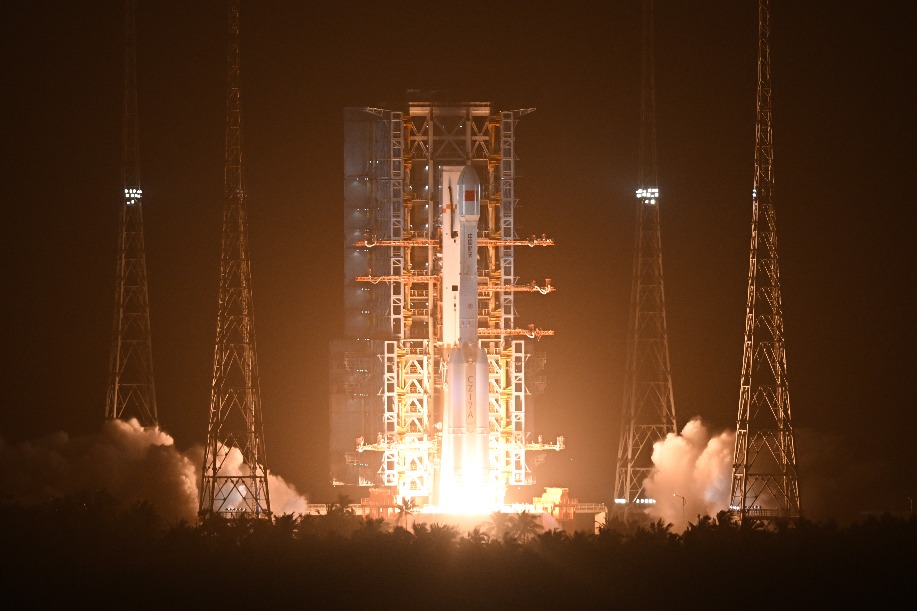Dynamic sectors paint a rosier picture

Official Chinese growth figures may not be attaching enough weight to China's fast-growing new industries.
Caixin BBD New Economy Index, which aims to redress this, was officially launched at the Level 39 venue in London's Canary Wharf on April 19.
It aims to measure the performance of such sectors as e-commerce, renewable energy, biotechnology and information industry.
| The renewable energy sector, such as new energy vehicles, is one of the sectors measured by the Caixin BBD New Economy Index, along with e-commerce, biotechnology and information technology. Provided to China Daily |
The new index has a value of 32.1, measuring the proportion of the new industry sectors in China's overall economy.
Chen Qin, chief economist of BBD, the Chengdu-based big data company that has collaborated with Peking University on the venture, says China's economy is now growing faster than the official data indicates.
"China is now under great transition. ... The old, traditional industries have been in recession for many years. Meanwhile, companies in new industries are constantly emerging," he says.
"The official figures are always underestimating GDP growth because the traditional methodology does not reflect that the emerging sector of the economy is growing much faster than the older traditional sector."
The government last changed its methodology for measuring GDP, which largely relies on industry output data, in 2013. Its next revision is scheduled for 2018.
The NEI is not the only new alternative measure for China's economic performance.
The Haitong New China Index was launched in March and recorded year-on-year growth of 14.7 percent for the more dynamic sectors of the economy.
It measures growth in airline passenger volume, telecommunications revenue (a proxy for China's burgeoning online economy), auto sales, nonbank financing and government spending on health, education and social security.
Miranda Carr, the London-based head of thematic research at Haitong, the China-based investment bank, says the index was launched to counter the view that the Chinese economy was doing badly.
"People have got this idea over the last year that the whole economy is collapsing and there has been too little attention paid to those parts that are growing."
She says there is a need to reflect a more rounded picture of what was really happening on the ground.
"All the focus has been on all the commodity producers selling to China doing badly. This, however, ignored that companies like Adidas and Nike, for example, were doing well, and also those engaged in travel and tourism and auto sales many other sectors. There was a need to provide a more overall picture."
Chen at BBD says his company's index can more accurately measure growth because it uses big data techniques, which can pick up behavior patterns that determine future economic activity, rather than just relies on output statistics and balance sheets, which are more reflective of the past.
"Behavior data tells us what an enterprise will do in the future. Therefore an index calculated with big data can more accurately forecast future trends than the ordinary statistical index."
Carr says the Haitong index, which the company has been using internally for the past 10 years before being made public, had detected a big rise in the new economy after the financial crisis.
"It only hit a problem with the stock market crash in the middle of last year that really affected consumption, so people suddenly weren't buying cars anymore or traveling abroad so much," adds Carr.
She says it has also being picking up some of the megatrends relating to China generally.
"If you look at airline passenger volume that can be a proxy for China's internationalization both in people going on holiday and also business travel; auto sales are a direct indication of consumer confidence; and obviously the nonbank finance is the risky bit, which can cause asset bubbles."
andrewmoody@chinadaily.com.cn
(China Daily European Weekly 04/22/2016 page7)
Today's Top News
- Takaichi must stop rubbing salt in wounds, retract Taiwan remarks
- Millions vie for civil service jobs
- Chinese landmark trade corridor handles over 5m TEUs
- China holds first national civil service exam since raising eligibility age cap
- Xi's article on CPC self-reform to be published
- Xi stresses improving long-term mechanisms for cyberspace governance































